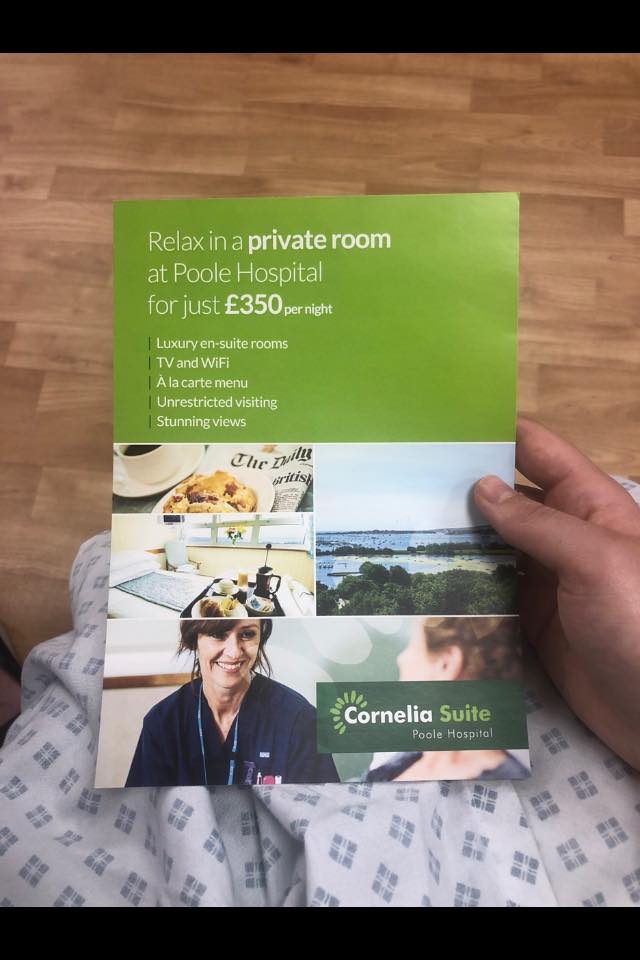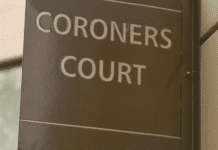It has come to our attention that Dorset CCG claim that our statistics of 183 per year likely to die if the downgrading of Poole A&E and Poole Maternity goes ahead is not based on any research.
This could not be further from the truth: these are based on a Dorset A&E Dr’s assessment of the situation of the Dorset patients detailed in the South West Ambulance Trust Report.
Here is our calculation based on the Dorset A&E Dr’s review of the cases that would have had to travel further had Poole A&E and Maternity not been there:
South West Ambulance Services Trust (SWAST) Report, August 2017: “Dorset Clinical Services Review: Modelling the Potential Impact on the Emergency Ambulance Service.”
This Report considered the risk of harm to patients, if Poole A&E were downgraded and Poole Maternity closed, and they had to travel further to access these services elsewhere. The Report covered a 4 month period, January – April 2017, and it looked at those arriving at Poole A&E by ambulance over that time.
The Report did not consider the risk to those who did not arrive at Poole A&E by ambulance over the 4 months, so the Report can only underestimate the number at risk.
Dorset Specialist Clinicians asked to look at the Report stated that it could not be used to quantify the risk to Maternity and Paediatric emergencies as the majority do not come to A&E by ambulance.
Freedom of Information Act responses from Poole show 80% of maternity emergencies do not arrive by ambulance and a significant minority of adult time critical emergencies self present.
The Clinicians were also concerned about the representativeness of the adult sample as there were no respiratory emergencies. There were also only two trauma cases in the sample identified.
The Report did not consider the risk to rural residents facing the longest total travel times on to alternative A&E and Maternity services. It did not consider total travel times at all, so did not address whether these journey times were within safe guidelines, or what the risk to those residents, as a group, would be.
The Report Executive Summary relies on ‘average’ journey times for it’s conclusions. ‘Outliers’ have been removed. As more people live in Bournemouth than in rural areas, using an ‘average’ time will favour RBH as a location, and the impact upon rural residents of loss of services at Poole will be concealed.
However the Report provides a starting point for assessing risk.
Based on the cases in the SWAST Report, the CCG calculated during the Judicial Review High Court case in July that 132 of the patients arriving at Poole A&E by ambulance over the 4 month period of the Report, would face potential harm had they had to travel further. This scales up to 396 patients at potential harm over a year.
Despite knowing in August 2017 that almost 400 per year of those arriving at A&E by ambulance alone were at risk of potential harm, the CCG claimed in September 2017 that the Clinical Risk of the plans to downgrade Poole A&E and close Poole Maternity was ‘minimal’ and in fact went on to claim that ‘60 lives would be saved’. When pressed in Court for evidence, the CCG relied on the Keogh Report, which was based on centralisation of services in urban areas where access to A&E was never more than 30 minutes away. Keogh specifically warned against using the blueprint of centralising services in rural areas due to longer travel times to reconfigured services cancelling out any benefits.
SWAST Report: Calculating actual harm: likely fatalities
The SWAST Report called for further review by a wider range of Clinicians to confirm the overall clinical impact of the changes (page 2, 1.6). This work was started in August 2017. Evidence to the High Court showed that the Clinicians asked for more time to carry out the risk assessment, and for access to the patients Hospital records.
The CCG rely on the fact that they have not done the work to assess how many of those at ‘potential harm’ would have faced actual harm.
However, an A&E Dr has looked at the sample cases listed in the Ambulance Trust Report, in terms of the danger posed by additional travel time to Hospital and says that a significant number of the cases listed are in imminent danger of dying.
Maternity Cases at risk of fatality
2 of the 3 Maternity cases listed (p10, 4.5.3) are in imminent danger of dying. They urgently need blood, which the Ambulance does not carry. These are:
Case 1: Post-Partum haemorrhage with absent radial pulse, which indicates extensive bleeding, where the Mum’s life is at risk, facing a 9 minute longer journey.
Case 3: Ectopic Pregnancy with extreme hypotension, systolic BP 66mmHg (extremely low) and pain score 10/10. There would be bleeding into abdominal cavity putting the Mum’s life at risk.
Adult Cases at risk of fatality
12 of the 27 Adult cases listed (pp 15-16, 5.4.5) are in imminent danger of dying.
These include 9 of the 10 cases where SWAST has put ‘Yes’ in the Potential Harm column (the A&E Dr excluded case 27 as improving) plus:
Case 6: 91 year old with large PR bleed, hypotensive and becoming shocked, facing a 20 minute longer journey.
Case 9: 42 year old overdose with fluctuating Glasgow Coma Scale and requiring Airway intervention, facing an 18 minute longer journey.
Case 26: 76 year old with cardiac arrest, where the Ambulance staff are trying to give CPR in a moving ambulance. Although the onward journey is only 4 minutes longer, in cardiac arrest a minute can be the difference between life and death.
The 27 adult cases are taken from a sample pool of 150 cases, where the actual pool at risk is 696 cases. 12 of the 150 are at imminent risk of dying. This scales up to 56 cases out of the 696.
Child Cases at risk of fatality
3 of the 4 Paediatric cases listed (p24, 6.5.3) are in imminent danger of dying. These are:
Case 1: Multiple Convulsion (status epilepticus). Patient remained Glasgow Coma Scale 3 (unresponsive) throughout ambulance attendance. Facing a 9 minute longer journey.
Case 3: Post cardiac arrest facing a 4 minute longer journey
Case 4: “Very sick child” – more details would aid assessment
Therefore we believe that those at risk of fatality over the 4 month period due to loss of A&E and Maternity at Poole are: 3 Children, 2 Mums in labour & 56 Adults = 61
Over a year, this scales up to 183 patients at risk of fatality due to longer journey time caused by loss of A&E and Maternity at Poole: 9 Children, 6 Mums-to-be and 168 Adults.
This is 183 patients per year who arrive by ambulance at risk of fatality due to loss of A&E and Maternity services at Poole.
This figure does not include the risk to those who do not arrive at A&E by ambulance, the majority of Maternity & Paediatric emergencies, and a significant minority of adults with time critical conditions. Longer journeys affect those who are not travelling with blue lights much more, as the traffic will not move aside for them.
Defend Dorset NHS












